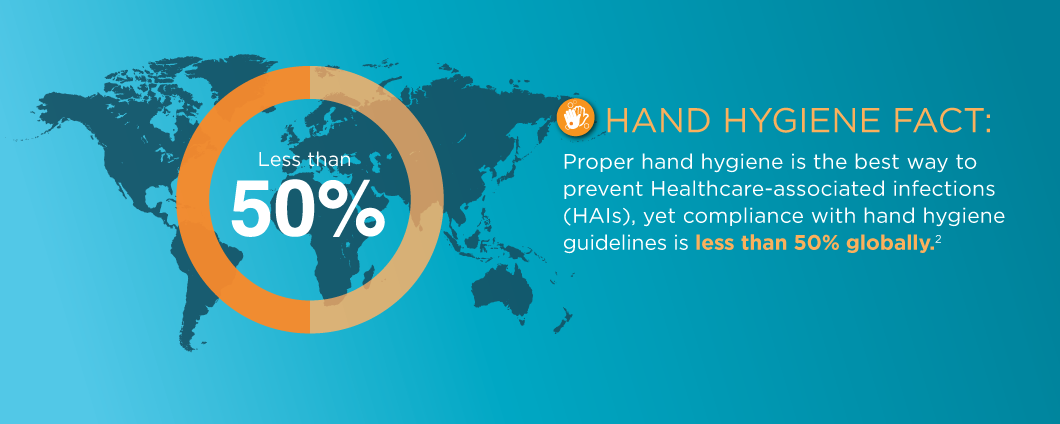Measuring Hand Hygiene Compliance with Electronic Monitoring

Stacy Roberts, Marketing Manager
While proper hand hygiene is critical to preventing the transmission of many healthcare-associated infections (HAIs), compliance with hand hygiene guidelines among healthcare workers is very low – averaging 39%. Hospitals have traditionally measured hand hygiene compliance (HHC) of their healthcare workers through manual direct observation (DO).
During the process, an observer is sent to monitor whether hospital staff are washing their hands as required and provide prompt feedback when improvement is needed. This practice is currently considered the “Gold Standard” of hand hygiene monitoring. However, manual direct observation is labor-intensive, expensive, and only accounts for 1.2% to 3.5% of all hand hygiene events.
Additionally, the most significant disadvantage is the potential to influence the behavior of those who know they are being observed. This is known as, the Hawthorne Effect and has been proven to cause Hand Hygiene Compliance rates to be overstated by up to 300%!
CenTrak identifies opportunities for performing hand hygiene, collects hand hygiene events, and delivers actionable insights to staff — all supported by our expert clinicians.
The importance of hand hygiene measurement and its role in reducing HAIs is universally recognized by organizations such as the Joint Commission, World Health Organization (WHO) and Centers for Disease Control (CDC). With the recent deployment of advanced technologies such as Real-Time Location Systems (RTLS), there are innovative, automatic, and more efficient monitoring tools to help drive true improvement in hand hygiene compliance.

For example, a Clinical-Grade RTLS solution would be able to demonstrate whether or not healthcare workers washed their hands upon entering a room and again after their interaction with a patient. Failure to comply with hand hygiene recommendations will result in a gentle beep from the staff member’s RTLS-enabled badge. This will serve as a real-time and automatic reminder before the staff member has had a chance to interact with a patient and possibly inflict avoidable harm. By using this technology, hospitals can audit hand hygiene processes, reduce the spread of unnecessary infections, improve patient outcomes, and lower healthcare costs.
Patients are subjected to extended lengths of stay and unnecessary suffering as a result of HAIs, many of which could be prevented with proper hand hygiene. In recent years, evidence-based electronic measurement of hand hygiene has become widely available to accurately and continuously monitor hand hygiene compliance in real-time and enable meaningful feedback to healthcare workers.
However, no policy guidelines or mandates exist to encourage the adoption of these advanced technologies for improved efficiencies and care. To this end, a new patient safety advocacy team has been created to lead the change in what is considered the acceptable standard of care on this important public health issue. EHCO™, the Electronic Hand-Hygiene Compliance Organization, is committed to influencing changes in policy and guidelines, and advocating that hand hygiene compliance monitoring be brought up to the same technological standards as the rest of healthcare.
Be sure to learn more about EHCO and stop by CenTrak’s booth #6828 at HIMSS 2016 for a live demo of our Clinical-Grade Visibility™ technology including an RTLS-enabled electronic hand hygiene monitoring solution!
Request A Demo
Resources:
http://www.ncbi.nlm.nih.gov/bo...






